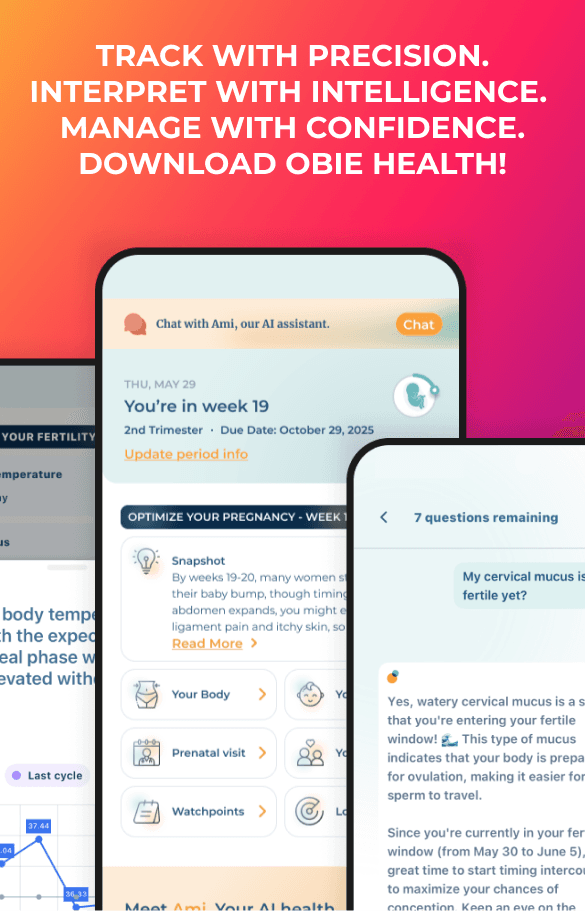Can Baby-Proofing become Adult-Proofing?
Obie Editorial Team
I had never seen my college roommate so crazed as when she was cramming for final exams senior year. That is, of course, until I visited her two weeks before her baby was due and saw her running around her home like the baby was going to be born in thirty seconds and she had nothing ready. The truth was that she had the entire nursery put together, painted, decorated, and equipped with every piece of baby equipment you could possibly imagine, including a tower of diapers in a range of sizes that I was fairly certain would last the baby-to-be for the first six months of his life. The rest of her home was also spotless, and I noticed that she had three bags lined up along the wall beside her front door. These bags, I would later find out, were filled with everything she could imagine she would possibly need when she went into labor. This included a bag equipped with all the materials for a makeshift birth in the car in the event that she just didn’t make it to the hospital.
Additionally, every room of the home had already been “baby proofed.” I couldn’t really figure out how much a home needed to be “proofed” for a newborn, but I was soon to discover that apparently my friend thought it needed quite a bit. Using the restroom was quite the undertaking as I tried to figure out the lock that kept the toilet lid firmly shut, and when I was asked to start a pot of tea, it wasn’t navigating the kitchen that was the problem, but rather the complicated mechanisms that prevented the cabinets and drawers from being opened without disengaging a little hook on the inside.
I left the visit feeling exhausted and a bit put-out. All of this baby-proofing seemed to go overboard for me. After all, she was going to give birth to a newborn, not a curious three-year-old, and though that baby would eventually grow up to be that three-year-old, did all of the adults of the home really need to be inconvenienced by all of the security measures already? Were all those security measures really needed at all?
Apparently, they are. The American Association of Pediatrics warns that children are in the most danger when they are in their own homes. Unintentional injuries due to choking, burns, drowning, poisoning and falls result in over a million deaths among children worldwide every year. Taking precautionary methods including keeping dangerous substances such as medication and cleaning solutions in locked cabinets, keeping the toilet water inaccessible, and ensuring children are well-supervised at all times can protect children from catastrophic situations. There obviously needs to be some balance though. If the safety measures are taken to the extreme, adults are likely to get frustrated and stop implementing them properly, which means they won’t be in place to protect the children effectively when they’re needed most.
Source: Mickalide A, Carr K. Safe Kids Worldwide: preventing unintentional childhood injuries across the globe. Pediatr Clin North Am. 2012 Dec;59(6):1367-80. doi: 10.1016/j.pcl.2012.08.008.
Additionally, every room of the home had already been “baby proofed.” I couldn’t really figure out how much a home needed to be “proofed” for a newborn, but I was soon to discover that apparently my friend thought it needed quite a bit. Using the restroom was quite the undertaking as I tried to figure out the lock that kept the toilet lid firmly shut, and when I was asked to start a pot of tea, it wasn’t navigating the kitchen that was the problem, but rather the complicated mechanisms that prevented the cabinets and drawers from being opened without disengaging a little hook on the inside.
I left the visit feeling exhausted and a bit put-out. All of this baby-proofing seemed to go overboard for me. After all, she was going to give birth to a newborn, not a curious three-year-old, and though that baby would eventually grow up to be that three-year-old, did all of the adults of the home really need to be inconvenienced by all of the security measures already? Were all those security measures really needed at all?
Apparently, they are. The American Association of Pediatrics warns that children are in the most danger when they are in their own homes. Unintentional injuries due to choking, burns, drowning, poisoning and falls result in over a million deaths among children worldwide every year. Taking precautionary methods including keeping dangerous substances such as medication and cleaning solutions in locked cabinets, keeping the toilet water inaccessible, and ensuring children are well-supervised at all times can protect children from catastrophic situations. There obviously needs to be some balance though. If the safety measures are taken to the extreme, adults are likely to get frustrated and stop implementing them properly, which means they won’t be in place to protect the children effectively when they’re needed most.
Source: Mickalide A, Carr K. Safe Kids Worldwide: preventing unintentional childhood injuries across the globe. Pediatr Clin North Am. 2012 Dec;59(6):1367-80. doi: 10.1016/j.pcl.2012.08.008.







